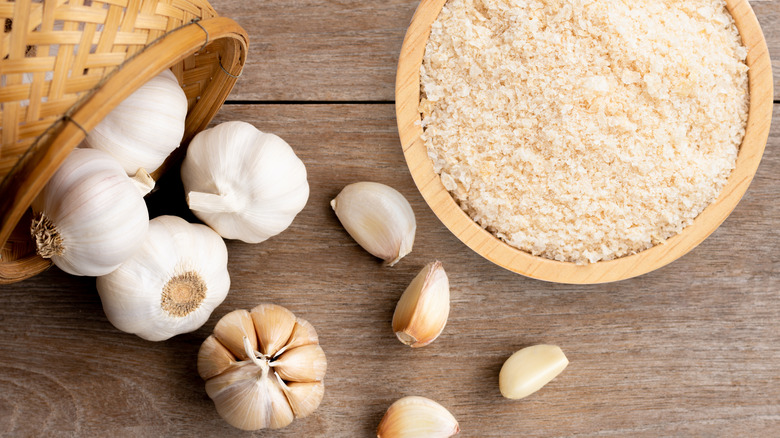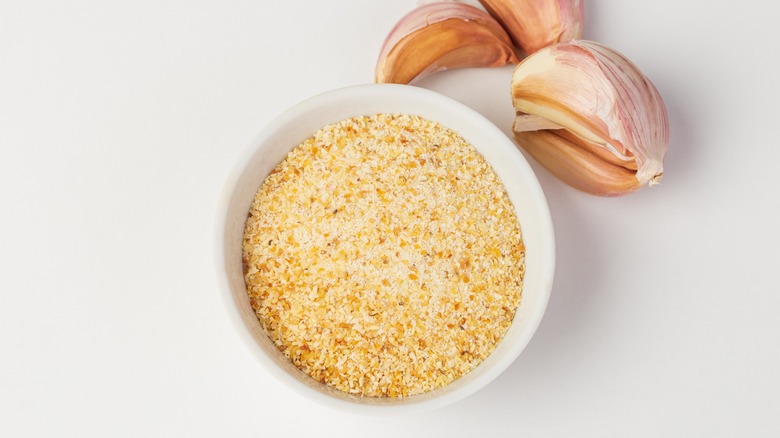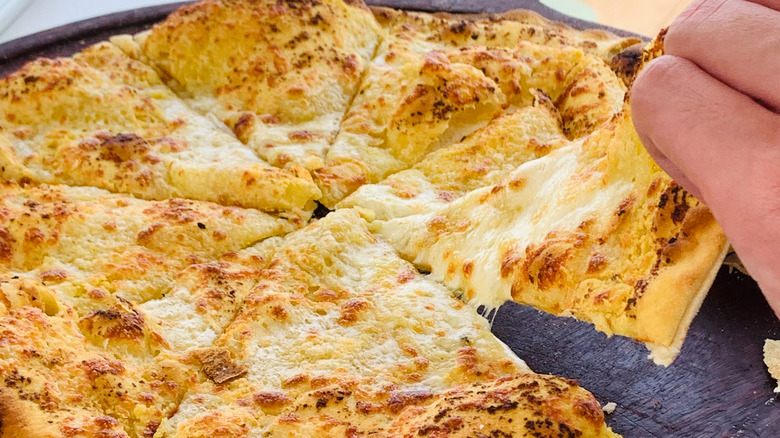Here's How To Substitute Garlic Powder For Fresh
Garlic can be a polarizing ingredient, with as many who love it as hate it thanks to its distinctive aroma and — at times — pungent flavor. For that reason, it can feel almost irreplaceable. That said, while you may not have fresh garlic on hand, many home cooks keep a jar of the powdered stuff in the pantry, which can save the day in a pinch for those who can't live without it.
But is a pinch all you need? Determining the amount of garlic powder to substitute for fresh cloves in your recipe is critical to the success of your swap. A good rule of thumb when you're looking to replace roasted or sautéed garlic is to add about ⅛ of a teaspoon per single clove.
This tip won't work the same for recipes that call for the allium in its raw and uncooked form, like some salad dressings, salsas or guacamoles, or fresh basil pesto (in these cases, a shallot or garlic scape might be a better idea). But it is an ideal solution for marinades, spice rubs, and pasta sauces.
Putting your powder to use, and keeping it fresh
Using this ingredient may seem as easy as mixing it into a recipe, but there's a flavorful reason you should be adding water to garlic powder — taking the extra step to restore some moisture to the dehydrated stuff will pay dividends in taste. You can do this by simply mixing it with an equal measure of water, then sauté it in a bit of butter. Since heat can neutralize the flavor of your powder, a big no-no is to do this sauté step dry. This will revive your garlic to its more natural potency.
Like most powdered products and spices, to preserve optimal freshness, it's always best to store it in a cool, dry place. Moisture is an enemy here, so do your best to keep the lid on tight and avoid humid environments. While you can hold onto this stuff for a few years (you should be in good shape for up to three), working your way through it as fast as possible will give you the most flavorful results. But if you prefer to steer clear of powder, there are a few other options for your garlic needs.
More swaps for your fresh garlic
Sticking to the spice cabinet, granulated garlic is always a possible swap, too; just be sure to note there is a subtle difference between this and garlic powder. The former doesn't have as much concentrated oomph, so you can use a little more (about ¼ teaspoon in place of a clove of garlic). Granulated garlic will also last a little longer on the shelf than your jar of powder, and those grains are a bit larger and more texturally detectable on your palate, but either will make quick work of jazzing up slices of pizza or perfecting garlic bread, spicing up macaroni and cheese, or boosting your own seasoned breadcrumbs.
Of course, none of this science is perfect since every clove of garlic will vary. Factors like freshness, size, and variety all play a part in its potency and taste. But by having a good starting point for your substitution ratio, you can easily carry on making your favorite recipes like sautéed garlic broccolini or garlicky shrimp scampi without the fresh stuff and still scratch the craving for that iconic garlic flavor.


